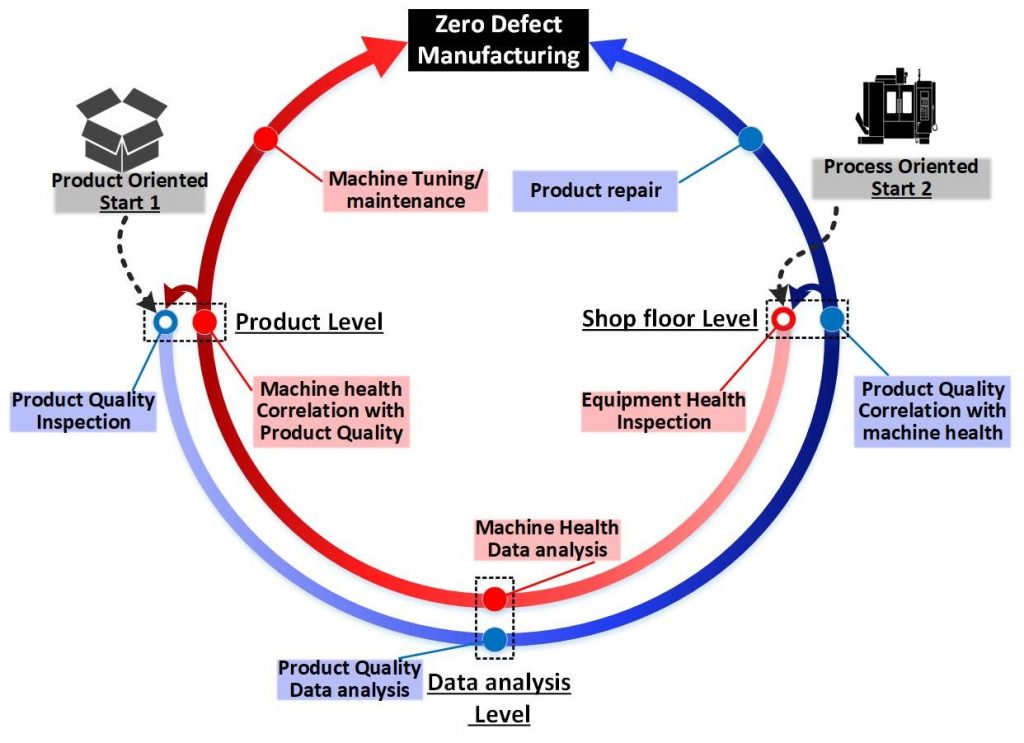One of the most promising strategies today is called Zero Defect Manufacturing. This strategy has the goal to decrease and mitigate failures within manufacturing processes and ‘to do things right in the first time’, in other words to eliminate defected parts during production. The Zero Defect Manufacturing can be implemented in two different approaches. The product-oriented ZDM and the process-oriented ZDM. The difference is that a product-oriented ZDM studies the defects on the actual parts and tries to find a solution while on the other hand the process-oriented ZDM studies the defects of the manufacturing equipment, and based on that can evaluate whether the manufactured products are good or not. The latter one lays within the predictive maintenance concept.

The ZDM consists of four strategies: detection, repair, prediction, and prevention. If a defect is detected then it can be repaired, also the data gathered by the defect detection module is populated to specifically designed algorithms for predicting when a defect may occur and therefore be prevented. Here fits the phrase mentioned earlier ‘to do things right in the first time’.

Reference
Psarommatis, F., May, G., Dreyfus, P.A. and Kiritsis, D., 2020. Zero defect manufacturing: state-of-the-art review, shortcomings and future directions in research. International journal of production research, 58(1), pp.1-17.
Publisher link: https://www.tandfonline.com/doi/abs/10.1080/00207543.2019.1605228